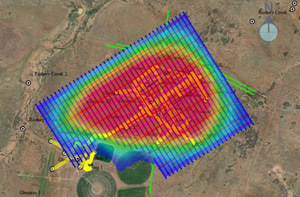STRYDE advances gas field optimization in Australia with seismic innovations
(WO) — As Australia shifts towards renewable energy, optimizing existing gas production fields remains crucial to meeting rising global energy demands. Technological advancements, particularly in enhanced gas recovery (EGR) techniques, are making field optimization projects more feasible across the country.
Despite the potential, these projects encounter challenges such as high costs, technical complexities, environmental regulations, and safety risks.
“While onshore fields in Australia are notably smaller compared to offshore basins, they still harbour substantial potential for both domestic and international gas markets,” Cameron Grant, chief commercial officer at STRYDE, said. “Addressing the challenges related to EGR techniques requires financial prudence, careful planning, technical expertise, and effective risk management to ensure the success and sustainability of enhanced gas recovery projects.”
To address these issues, seismic data technology has emerged as a cost-effective and environmentally friendly solution. Recent advancements allow for high-definition subsurface imaging with minimal environmental impact. Brendon Mitchell, managing director of Oceania Geo, highlights the benefits of using high-quality seismic data to enhance production optimization. "Pad3D, our new offering, provides rapid drill-ready subsurface images, helping to make informed drilling decisions while minimizing environmental impact," Mitchell states.
The STRYDE Node, a compact and cost-effective seismic sensor, is central to this technology. Designed for deployment in various land settings, it enables rapid surveys with minimal land disturbance. This approach enhances the accuracy of subsurface images and improves the efficiency of field optimization, particularly in complex operational conditions.
Pad3D was recently piloted in collaboration with STRYDE and Earth Signal Processing for Galilee Energy. The pilot demonstrated the viability of using small-footprint 3D seismic surveys with lower cost and reduced environmental impact. The project, focused on structural and stratigraphic certainty, was completed in seven days with a small crew and zero incidents. The technology allowed for dense seismic coverage and fast-track processing of data.
Mitchell concludes, "The success of the pilot project for Galilee Energy showcases the effectiveness of STRYDE's nodes in maximizing hydrocarbon recovery. This solution not only benefits oil and gas developments but also opens new opportunities in the renewables sector, including mining and geothermal projects."



